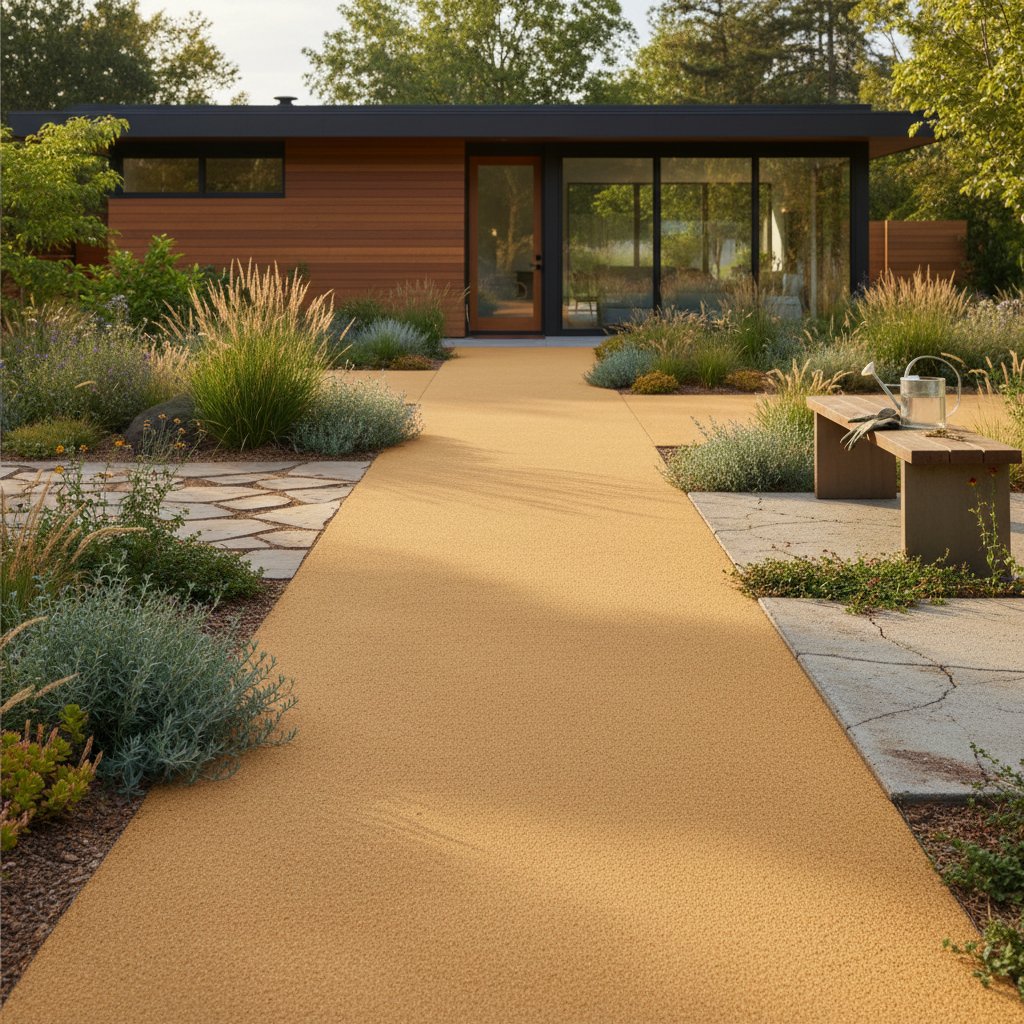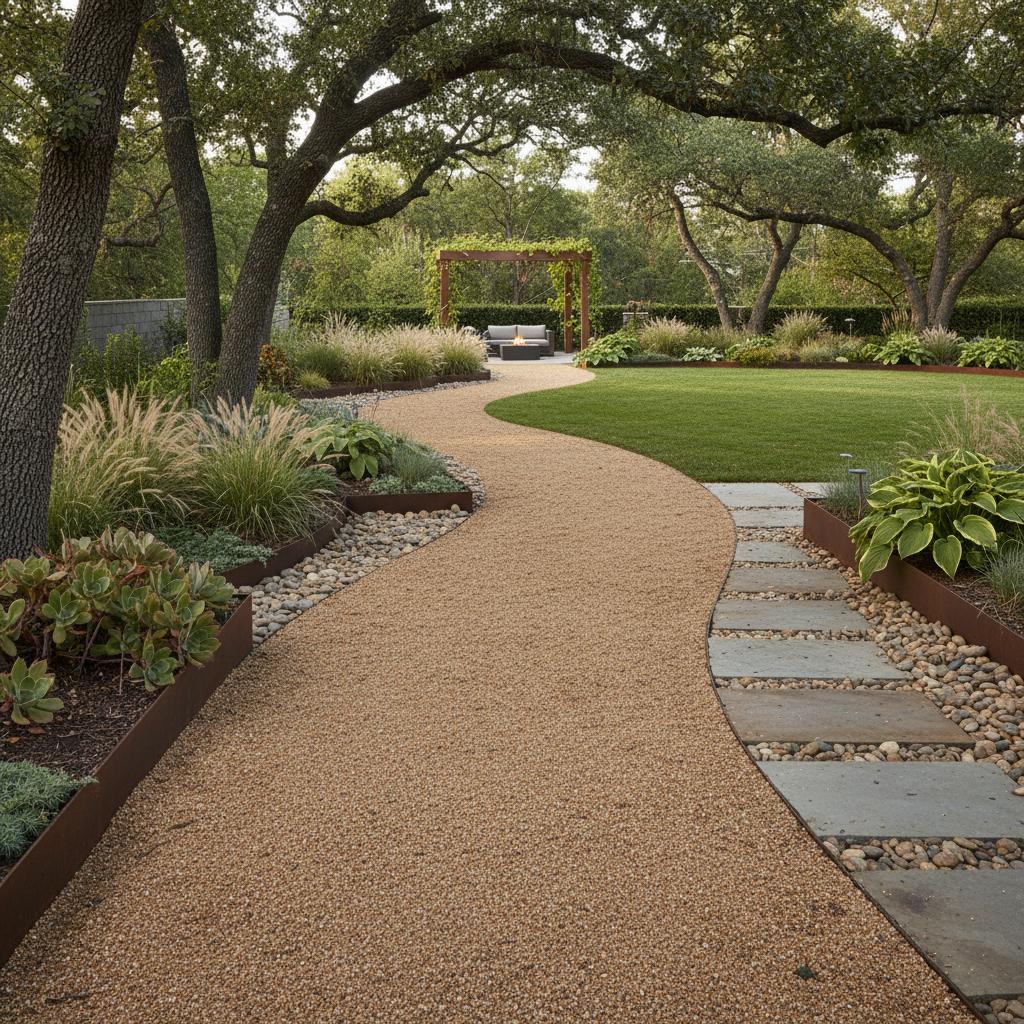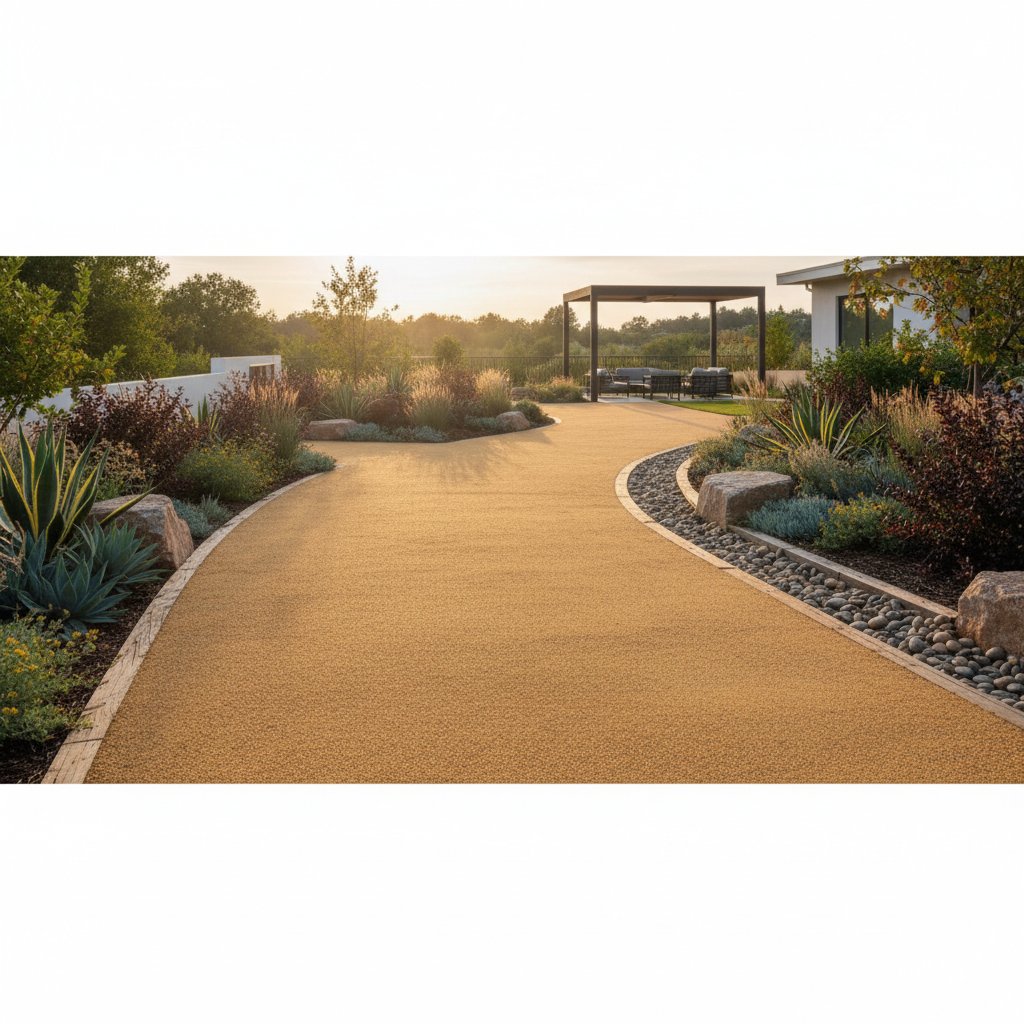Embracing Low-Maintenance Landscaping with Decomposed Granite Paths
Homeowners seeking a natural, cost-effective, and straightforward material for garden pathways often find decomposed granite an excellent solution. This option appeals to those desiring a rustic appearance without the ongoing demands associated with concrete or pavers. Decomposed granite introduces organic texture to exterior areas while remaining functional for regular foot traffic.
Understanding Decomposed Granite
Decomposed granite, commonly abbreviated as DG, consists of granite rock broken down by natural weathering into granules and fine particles. Available in hues such as tan, brown, gray, and reddish shades, it integrates smoothly with diverse landscapes. Upon compaction, it creates a solid yet permeable surface that facilitates water drainage, rendering it suitable for pathways, patios, and edging in gardens.
Three primary varieties of decomposed granite exist for purchase:
- Loose DG: Unprocessed and natural, this type suits locations with minimal traffic.
- Stabilized DG: Incorporated with a binding agent, it yields a firmer surface resistant to erosion and displacement.
- Resin-coated DG: Treated with a resin adhesive, it produces a sleek, durable finish akin to paved asphalt.
Reasons for Its Rising Popularity Among Homeowners
The appeal of decomposed granite pathways stems from preferences for reduced upkeep and environmentally conscious outdoor design. Conventional materials like concrete or brick frequently develop cracks, demand frequent cleaning, and necessitate expert installation. In comparison, decomposed granite permits installation using basic equipment and moderate labor.
Key factors driving its selection include:
- Seamless natural integration: It harmonizes with gardens featuring native or water-efficient vegetation.
- Permeable design: Water infiltrates the surface rather than accumulating, minimizing erosion and flooding risks.
- Pleasant underfoot sensation: The material offers a gentler texture than loose gravel.
- Economical pricing: Both supplies and labor typically cost less than alternative surfacing methods.
- Versatile applications: It adapts well to walkways, patios, driveways, or play areas.
To illustrate permeability benefits, consider that in regions with heavy rainfall, decomposed granite prevents water pooling that could otherwise damage surrounding plants or structures. This feature also supports groundwater recharge, aligning with sustainable practices.
Pricing Considerations
Expenses for decomposed granite vary according to the selected type, material quality, project scale, and installation approach. Loose decomposed granite generally ranges from one to three dollars per square foot. Stabilized or resin-coated versions approach six dollars per square foot, reflecting the inclusion of stabilizing additives.
For self-installation, factor in expenses for material delivery, border materials, and compaction devices. Engaging a professional landscaper might increase costs by several dollars per square foot, yet it guarantees accurate leveling and drainage, thereby prolonging the pathway's longevity. For a standard 100-square-foot path, expect total outlays between 150 and 600 dollars, depending on choices made.
Step-by-Step Installation Guide
Installing decomposed granite requires careful groundwork, though the process remains accessible. Neglecting preparation can result in instability or poor water flow over time.
Follow these steps for success:
- Outline the design. Use stakes and string to delineate the pathway's boundaries and curves.
- Excavate the site. Remove soil to a depth of three to four inches, ensuring a level foundation.
- Install the sub-base. Layer two to three inches of crushed stone or gravel to promote stability and drainage.
- Distribute the decomposed granite. Apply it in layers of one to two inches for even coverage.
- Compact the layers. Employ a manual tamper or mechanical plate compactor to achieve a dense, uniform surface.
- Secure borders. Position metal, plastic, or stone edging to contain the material and maintain shape.
- Moisten the surface. Apply a light spray of water to encourage particle binding and settling.
After compaction, inspect for smoothness by walking the path; adjust as necessary before final watering. In sloped areas, incorporate subtle grading to direct water away from high-traffic zones.
Ongoing Care and Upkeep
Established decomposed granite pathways demand minimal intervention, though periodic attention preserves their condition.
Essential maintenance practices encompass:
- Periodic raking: Redistribute material to address depressions from use.
- Annual replenishment: Add fresh decomposed granite to worn sections, particularly with loose varieties.
- Weed prevention: Install geotextile fabric beneath the base layer or apply targeted herbicides sparingly.
- Gentle cleaning: Opt for brooms or blowers over high-pressure washers to avoid surface disruption.
In wet climates, opt for stabilized or resin-coated types to combat washouts. Arid environments favor loose decomposed granite, which retains a soft, authentic character ideal for xeriscaped or Mediterranean-style gardens.
Decomposed Granite Versus Alternative Materials
Selecting between decomposed granite and other options involves evaluating intended use, upkeep tolerance, and aesthetic preferences.
| Material | Cost Range (per sq. ft.) | Maintenance Level | Aesthetic and Tactile Qualities |
|---|---|---|---|
| Loose DG | $1–$3 | Low | Organic, textured |
| Stabilized DG | $3–$6 | Very Low | Solid, even |
| Pavers | $8–$15 | Moderate | Defined, elegant |
| Concrete | $6–$10 | Moderate | Sleek, contemporary |
| Gravel | $1–$2 | Moderate | Informal, shifting |
Concrete, while durable, often cracks under freeze-thaw cycles and impedes natural drainage, whereas decomposed granite adapts to environmental shifts without such vulnerabilities.
Enhancing Your Landscape with Decomposed Granite
Decomposed granite pathways offer a practical means to revitalize your yard, yielding enduring functionality with modest investment. Prior to commencement, evaluate pathway routes, desired widths typically between two and four feet, and granite colors that complement existing foliage and hardscapes.
Upon completion, enjoy a pathway that integrates naturally, withstands regular use, and requires only occasional tending. This choice suits everything from meandering garden trails to expansive patio extensions, infusing warmth and character into your surroundings far beyond the rigidity of concrete alternatives.



